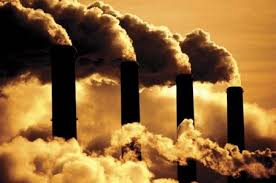WMO Bulletin 2013: Warming gases concentration breaks record
A new World Meteorological Organization bulletin has revealed the levels of gases in the atmosphere that drive global warming increased to a record high in 2012.
According to the WMO, atmospheric CO2 grew more rapidly last year than its average rise over the past decade.
Concentrations of methane and nitrous oxide also broke previous records
Thanks to carbon dioxide and these other gases, the WMO says the warming effect on our climate has increased by almost a third since 1990.
The WMO’s annual greenhouse gas bulletin measures concentrations in the atmosphere, not emissions on the ground.
Carbon dioxide is the most important of the gases that they track, but only about half of the CO2 that’s emitted by human activities remains in the atmosphere, with the rest being absorbed by the plants, trees, the land and the oceans.
Since the start of the industrial era in 1750, global average levels of CO2 in the atmosphere have increased by 141%.
According to the WMO there were 393.1 parts per million (ppm) of carbon dioxide in the atmosphere in 2012, an increase of 2.2 ppm over 2011.
This was above the yearly average of 2.02 ppm over the past decade.
“The observations highlight yet again how heat-trapping gases from human activities have upset the natural balance of our atmosphere and are a major contribution to climate change,” said WMO Secretary-General Michel Jarraud.
While the daily measurement of carbon dioxide in the atmosphere exceeded the symbolic 400 ppm mark in May this year, according to the WMO the global annual average CO2 concentration will cross this point in 2015 or 2016.
Levels of methane also reached record highs in 2012 of 1,819 parts per billion. Concentrations have been increasing since 2007 after a period when they appeared to be leveling off.
The WMO report says that it is not yet possible to attribute the methane increase to either human activities like cattle breeding and landfills or natural sources such as wetlands.
They believe that the rising emissions come from the tropical and mid-latitude northern hemisphere and not from the Arctic, where methane from the melting of permafrost and hydrates has long been a concern.
Emissions of nitrous oxide have also grown, with the atmospheric concentration in 2012 at 325.1 parts per billion, 120% above pre-industrial levels.
Nitrous oxide gas, although its concentrations are tiny compared to CO2, is 298 times more warming and also plays a role in the destruction of the ozone layer.
Recent research indicates that the rate of increase in emissions might be slowing down, but the gases can continue to concentrate in the atmosphere and exert a climate influence for hundreds if not thousands of years.
Scientists believe that the new data indicates that global warming will be back with a vengeance, after a slowdown in the rate of temperature increases over the past 14 years.

